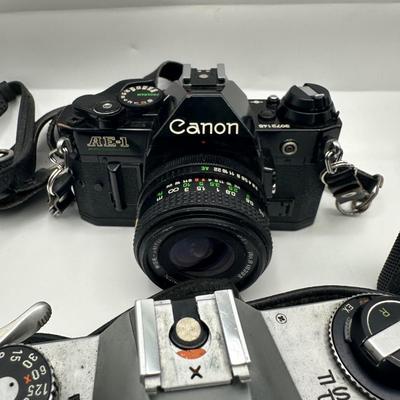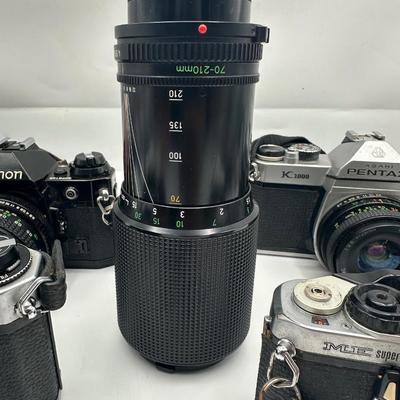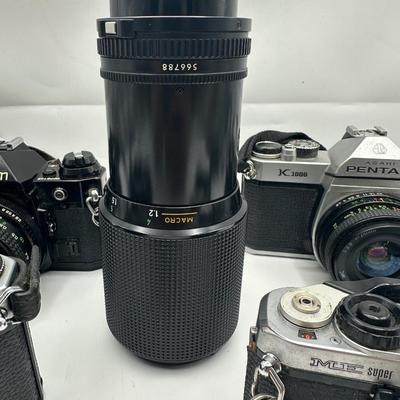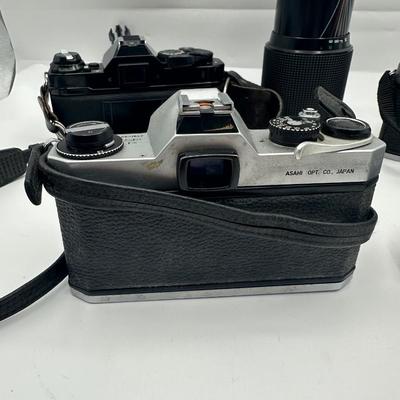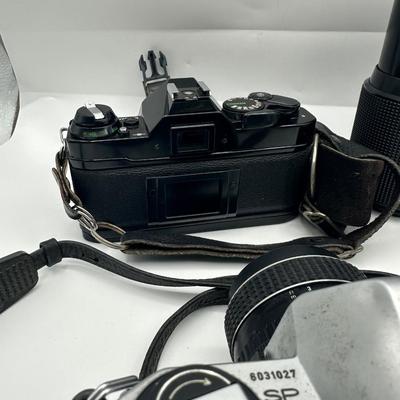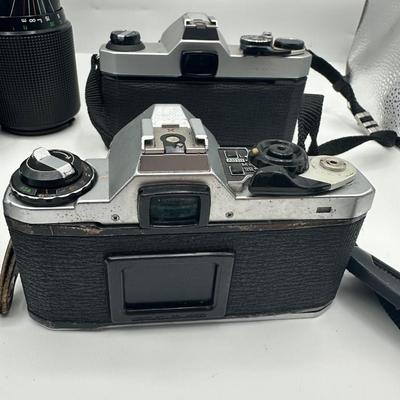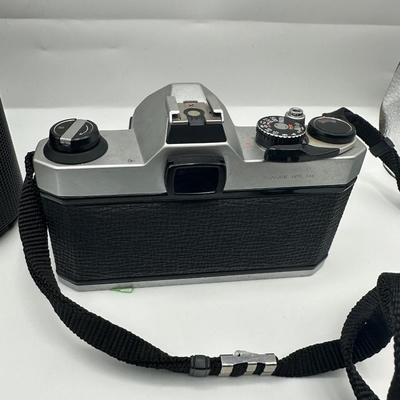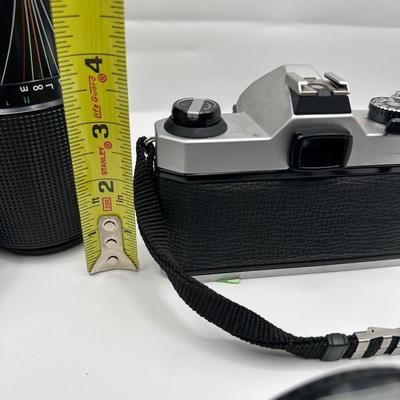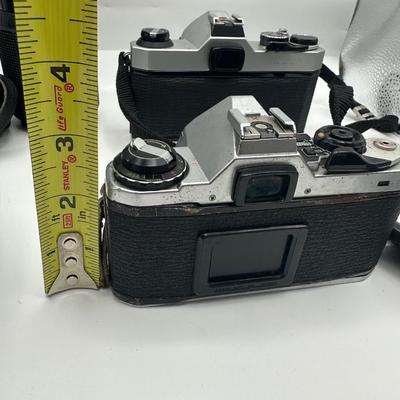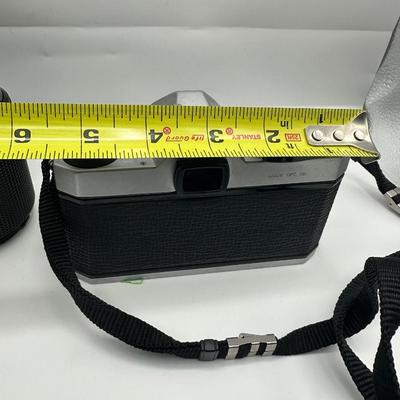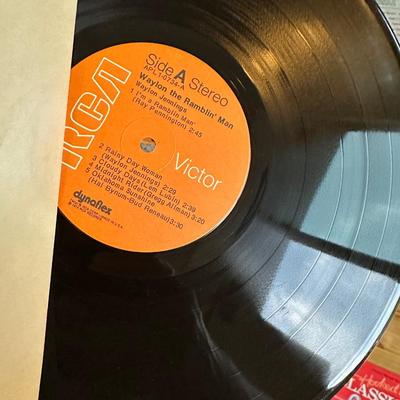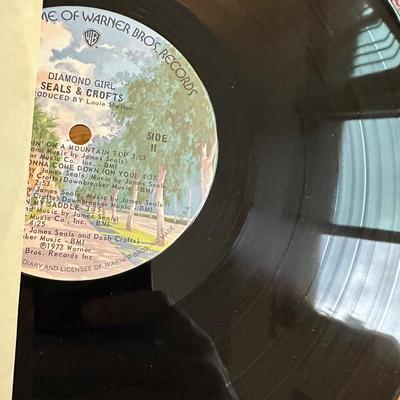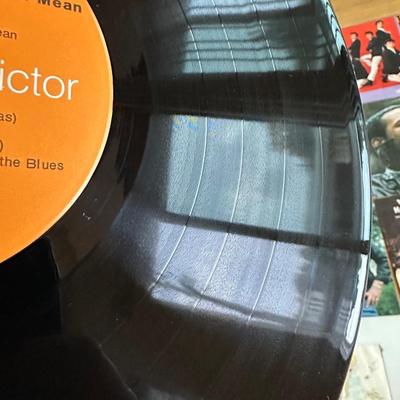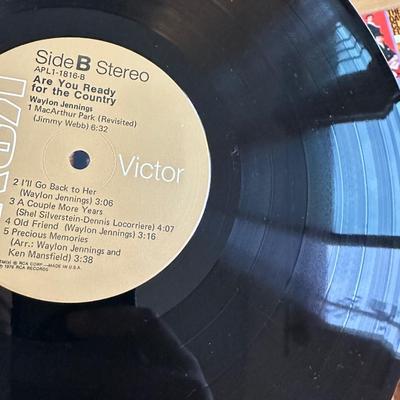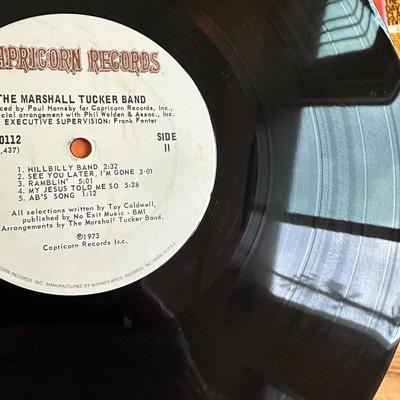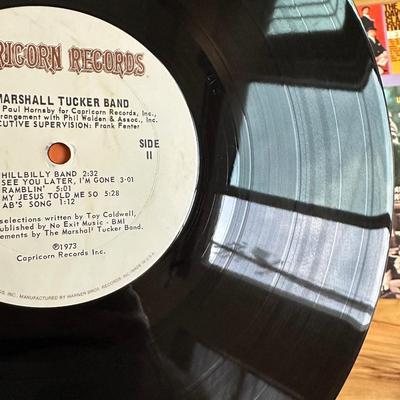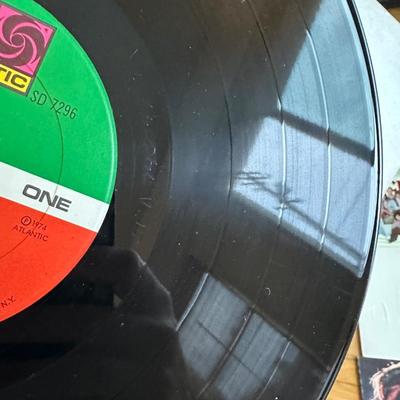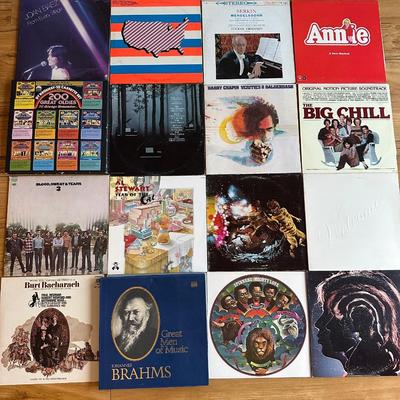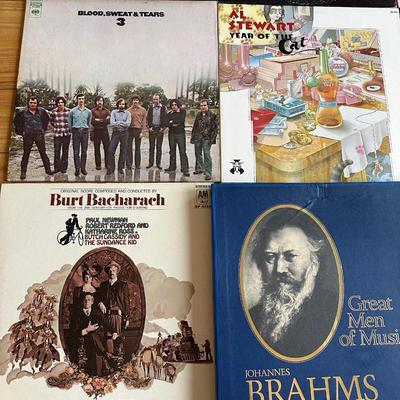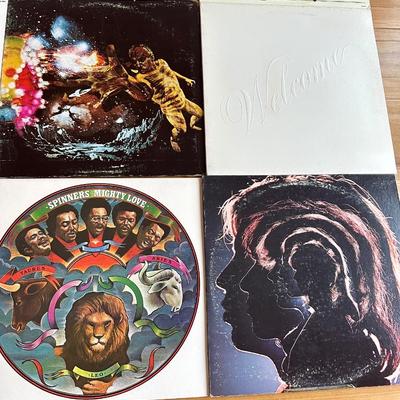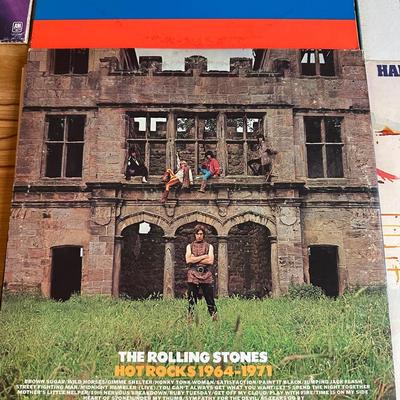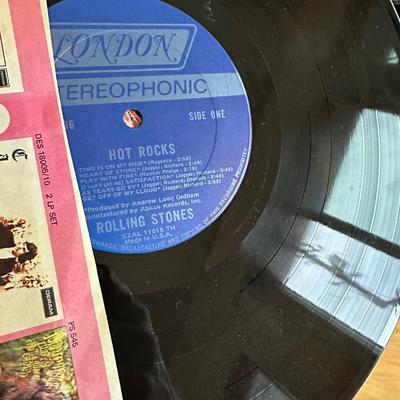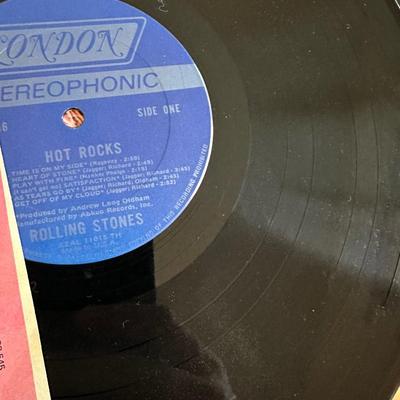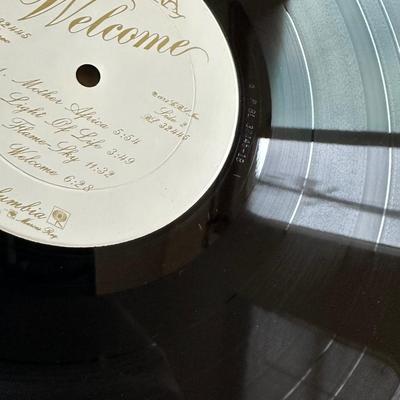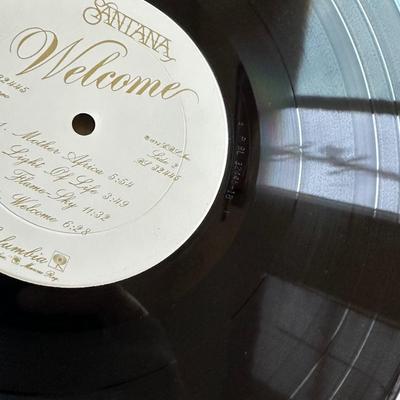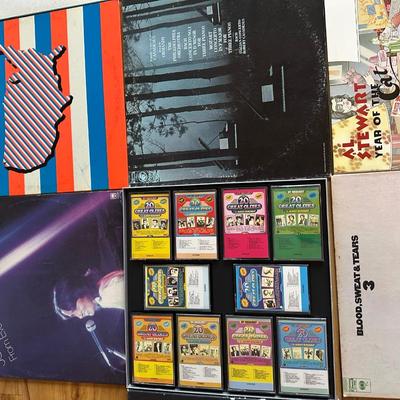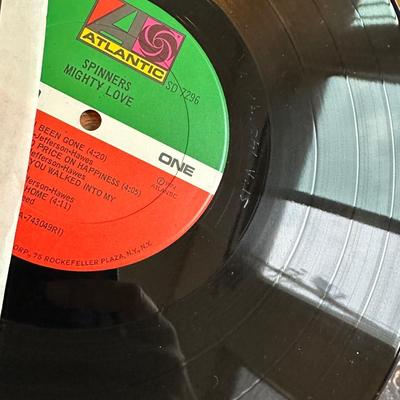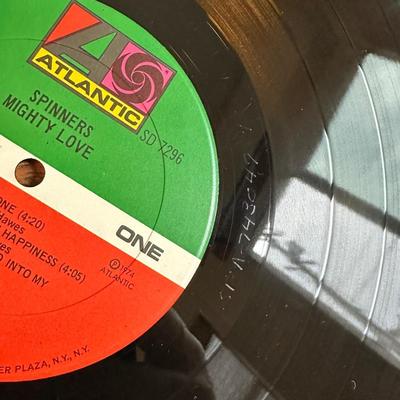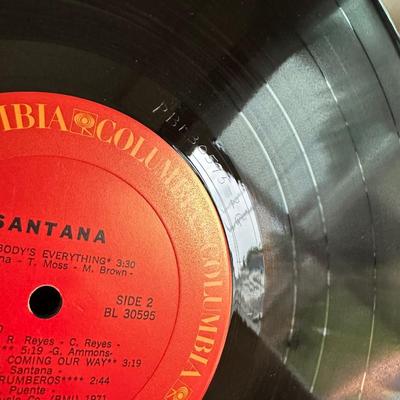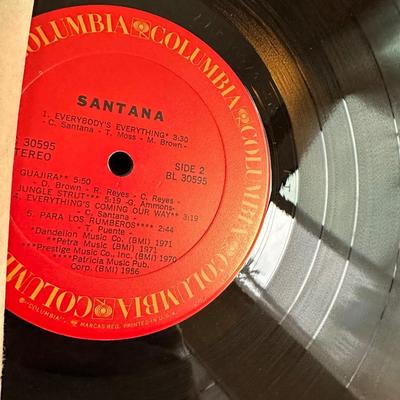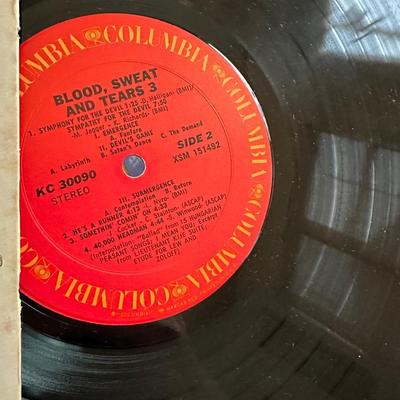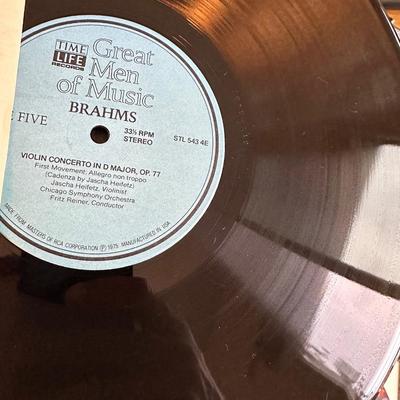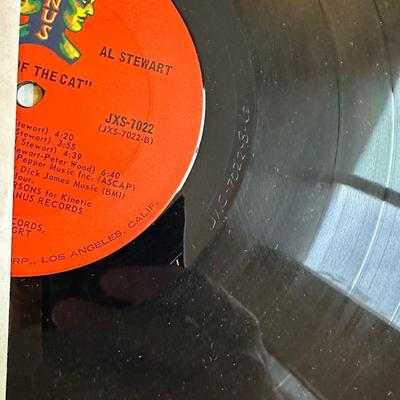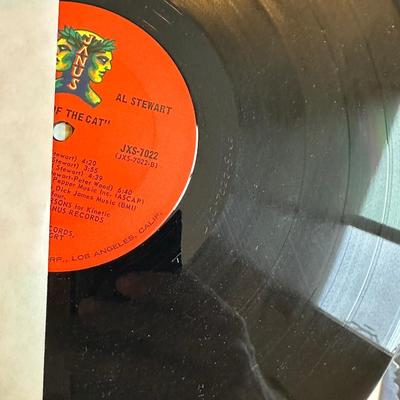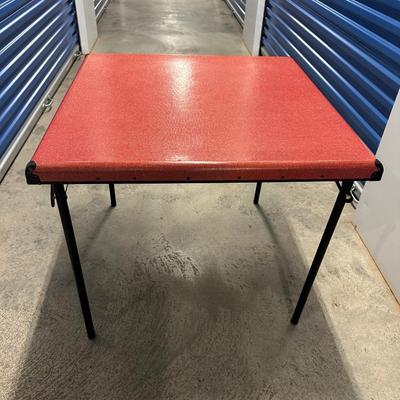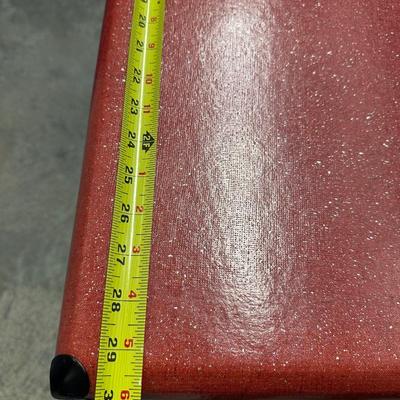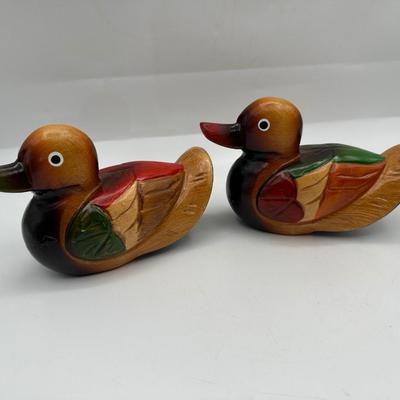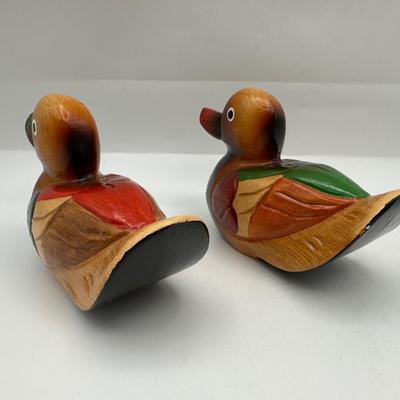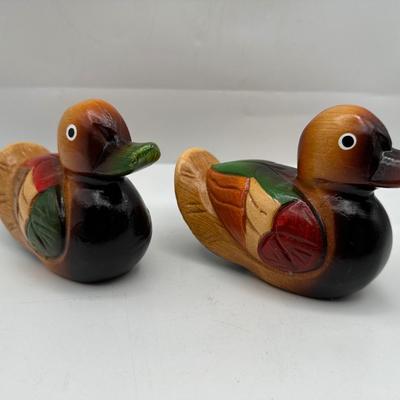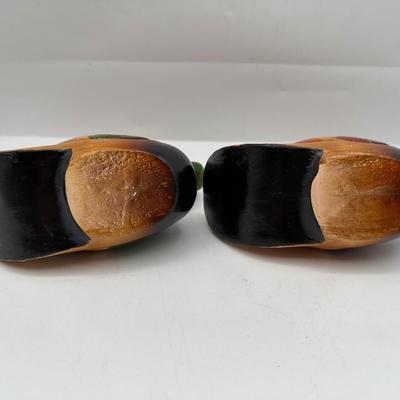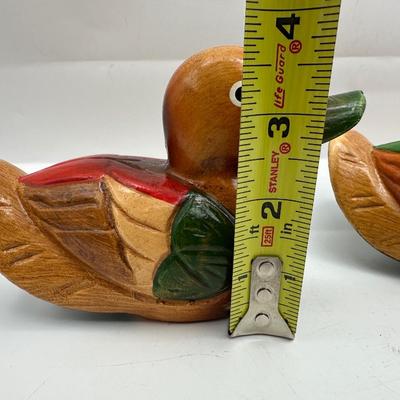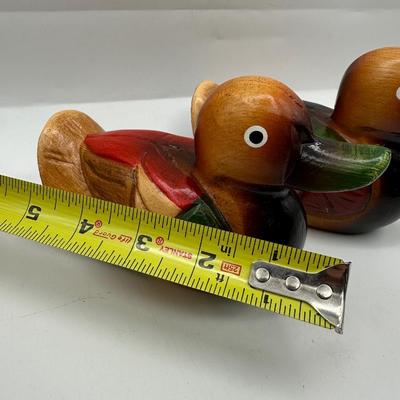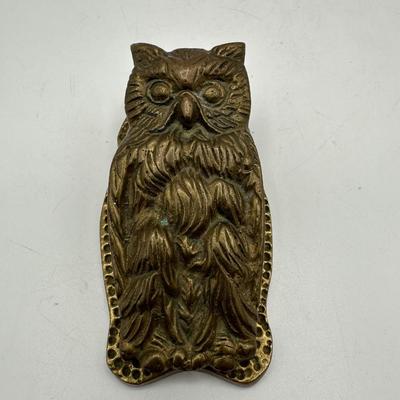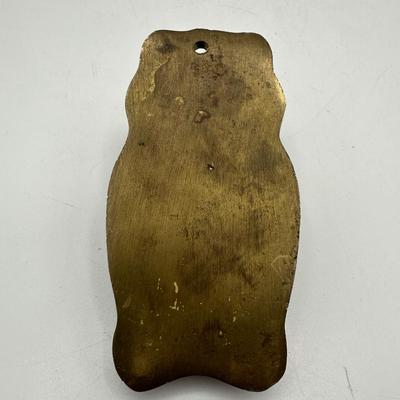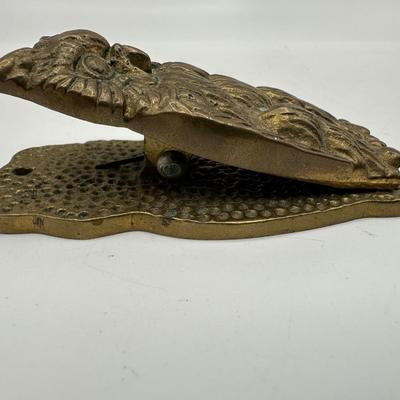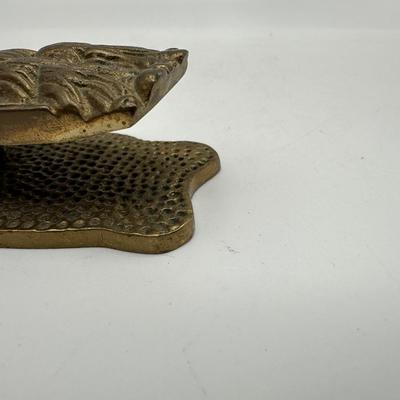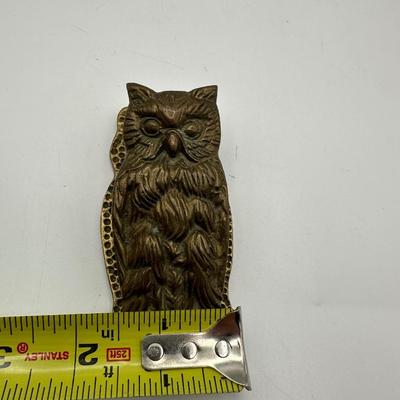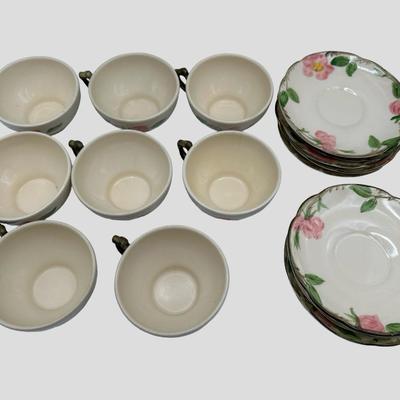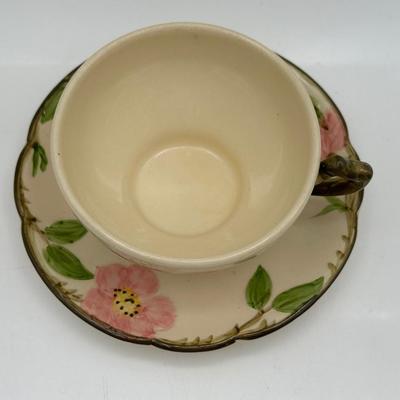Advertisement
Estate Sale Photo(s) Around Lacombe, LA 70445
1,324 estate sale photo(s) currently listed near 70445 (Lacombe, Louisiana)
-
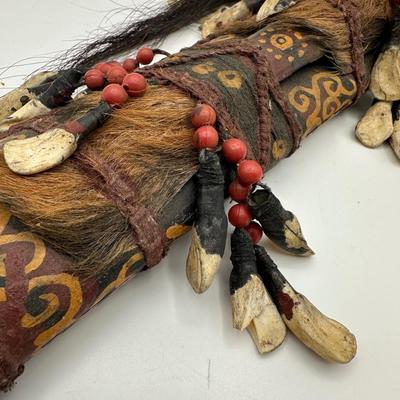
*Missing the main blade This is a striking Dayak tribal knife with its original scabbard, originating from Borneo (Kalimantan, Indonesia). Richly decorated and deeply symbolic, this ceremonial piece reflects the craftsmanship and cultural traditions of the indigenous Dayak peoples. The wooden scabbard is beautifully hand-painted in traditional motifs and adorned with animal teeth, red beads, natural fibers, and tufts of animal hair, likely boar. The decorations are consistent with items used for ritual or ceremonial purposes, not modern replicas. These intricate adornments were often indicators of social status, tribal affiliation, or rites of passage. -
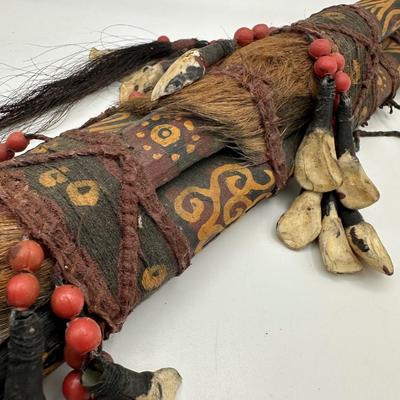
*Missing the main blade This is a striking Dayak tribal knife with its original scabbard, originating from Borneo (Kalimantan, Indonesia). Richly decorated and deeply symbolic, this ceremonial piece reflects the craftsmanship and cultural traditions of the indigenous Dayak peoples. The wooden scabbard is beautifully hand-painted in traditional motifs and adorned with animal teeth, red beads, natural fibers, and tufts of animal hair, likely boar. The decorations are consistent with items used for ritual or ceremonial purposes, not modern replicas. These intricate adornments were often indicators of social status, tribal affiliation, or rites of passage. -
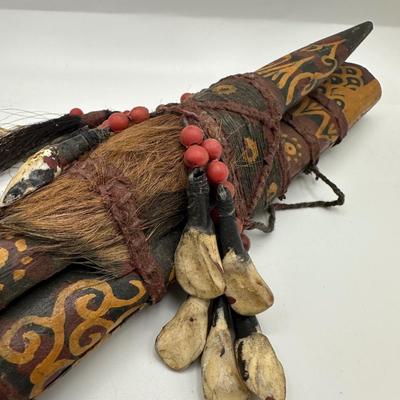
*Missing the main blade This is a striking Dayak tribal knife with its original scabbard, originating from Borneo (Kalimantan, Indonesia). Richly decorated and deeply symbolic, this ceremonial piece reflects the craftsmanship and cultural traditions of the indigenous Dayak peoples. The wooden scabbard is beautifully hand-painted in traditional motifs and adorned with animal teeth, red beads, natural fibers, and tufts of animal hair, likely boar. The decorations are consistent with items used for ritual or ceremonial purposes, not modern replicas. These intricate adornments were often indicators of social status, tribal affiliation, or rites of passage. -
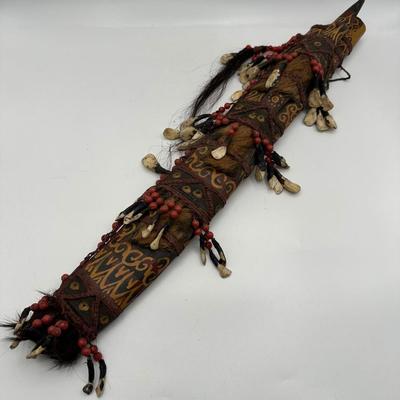
*Missing the main blade This is a striking Dayak tribal knife with its original scabbard, originating from Borneo (Kalimantan, Indonesia). Richly decorated and deeply symbolic, this ceremonial piece reflects the craftsmanship and cultural traditions of the indigenous Dayak peoples. The wooden scabbard is beautifully hand-painted in traditional motifs and adorned with animal teeth, red beads, natural fibers, and tufts of animal hair, likely boar. The decorations are consistent with items used for ritual or ceremonial purposes, not modern replicas. These intricate adornments were often indicators of social status, tribal affiliation, or rites of passage. -

*Missing the main blade This is a striking Dayak tribal knife with its original scabbard, originating from Borneo (Kalimantan, Indonesia). Richly decorated and deeply symbolic, this ceremonial piece reflects the craftsmanship and cultural traditions of the indigenous Dayak peoples. The wooden scabbard is beautifully hand-painted in traditional motifs and adorned with animal teeth, red beads, natural fibers, and tufts of animal hair, likely boar. The decorations are consistent with items used for ritual or ceremonial purposes, not modern replicas. These intricate adornments were often indicators of social status, tribal affiliation, or rites of passage. -
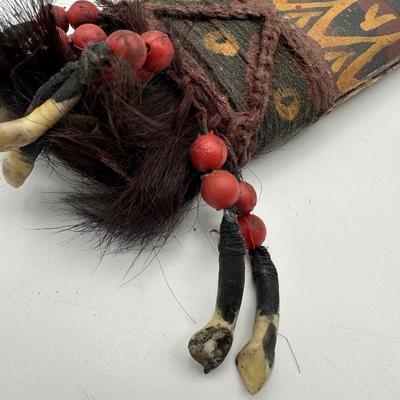
*Missing the main blade This is a striking Dayak tribal knife with its original scabbard, originating from Borneo (Kalimantan, Indonesia). Richly decorated and deeply symbolic, this ceremonial piece reflects the craftsmanship and cultural traditions of the indigenous Dayak peoples. The wooden scabbard is beautifully hand-painted in traditional motifs and adorned with animal teeth, red beads, natural fibers, and tufts of animal hair, likely boar. The decorations are consistent with items used for ritual or ceremonial purposes, not modern replicas. These intricate adornments were often indicators of social status, tribal affiliation, or rites of passage. -
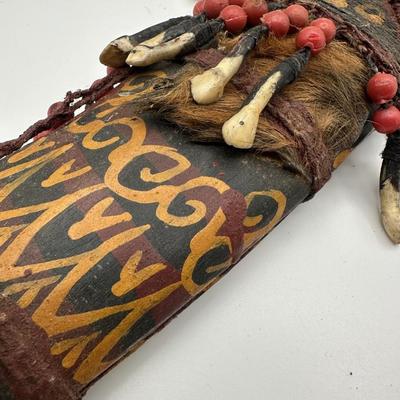
*Missing the main blade This is a striking Dayak tribal knife with its original scabbard, originating from Borneo (Kalimantan, Indonesia). Richly decorated and deeply symbolic, this ceremonial piece reflects the craftsmanship and cultural traditions of the indigenous Dayak peoples. The wooden scabbard is beautifully hand-painted in traditional motifs and adorned with animal teeth, red beads, natural fibers, and tufts of animal hair, likely boar. The decorations are consistent with items used for ritual or ceremonial purposes, not modern replicas. These intricate adornments were often indicators of social status, tribal affiliation, or rites of passage. -
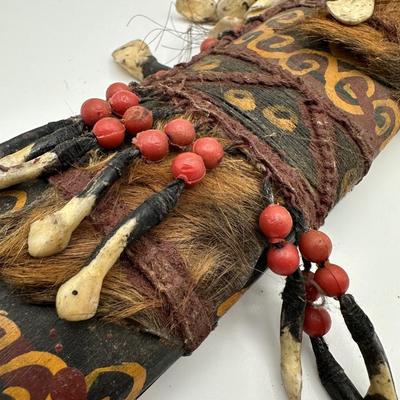
*Missing the main blade This is a striking Dayak tribal knife with its original scabbard, originating from Borneo (Kalimantan, Indonesia). Richly decorated and deeply symbolic, this ceremonial piece reflects the craftsmanship and cultural traditions of the indigenous Dayak peoples. The wooden scabbard is beautifully hand-painted in traditional motifs and adorned with animal teeth, red beads, natural fibers, and tufts of animal hair, likely boar. The decorations are consistent with items used for ritual or ceremonial purposes, not modern replicas. These intricate adornments were often indicators of social status, tribal affiliation, or rites of passage. -
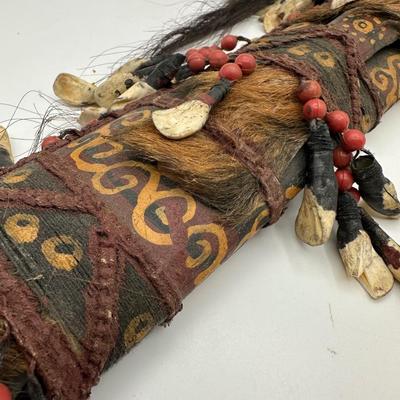
*Missing the main blade This is a striking Dayak tribal knife with its original scabbard, originating from Borneo (Kalimantan, Indonesia). Richly decorated and deeply symbolic, this ceremonial piece reflects the craftsmanship and cultural traditions of the indigenous Dayak peoples. The wooden scabbard is beautifully hand-painted in traditional motifs and adorned with animal teeth, red beads, natural fibers, and tufts of animal hair, likely boar. The decorations are consistent with items used for ritual or ceremonial purposes, not modern replicas. These intricate adornments were often indicators of social status, tribal affiliation, or rites of passage. -
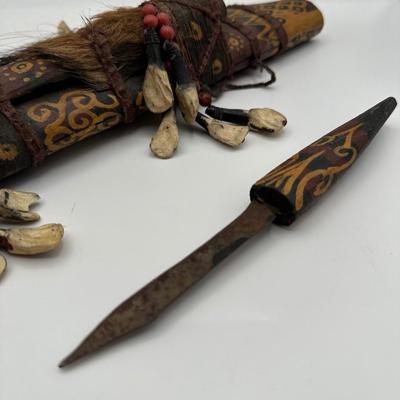
*Missing the main blade This is a striking Dayak tribal knife with its original scabbard, originating from Borneo (Kalimantan, Indonesia). Richly decorated and deeply symbolic, this ceremonial piece reflects the craftsmanship and cultural traditions of the indigenous Dayak peoples. The wooden scabbard is beautifully hand-painted in traditional motifs and adorned with animal teeth, red beads, natural fibers, and tufts of animal hair, likely boar. The decorations are consistent with items used for ritual or ceremonial purposes, not modern replicas. These intricate adornments were often indicators of social status, tribal affiliation, or rites of passage. -
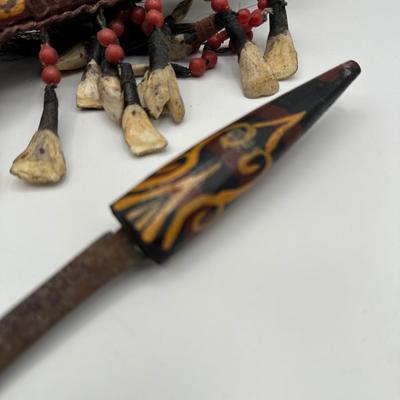
*Missing the main blade This is a striking Dayak tribal knife with its original scabbard, originating from Borneo (Kalimantan, Indonesia). Richly decorated and deeply symbolic, this ceremonial piece reflects the craftsmanship and cultural traditions of the indigenous Dayak peoples. The wooden scabbard is beautifully hand-painted in traditional motifs and adorned with animal teeth, red beads, natural fibers, and tufts of animal hair, likely boar. The decorations are consistent with items used for ritual or ceremonial purposes, not modern replicas. These intricate adornments were often indicators of social status, tribal affiliation, or rites of passage. -
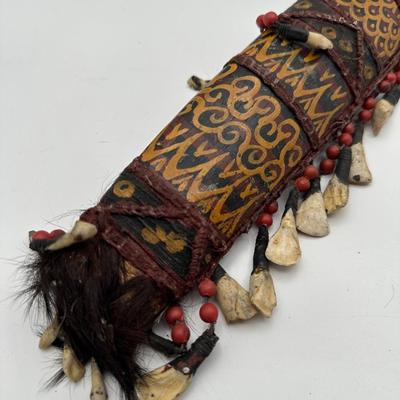
*Missing the main blade This is a striking Dayak tribal knife with its original scabbard, originating from Borneo (Kalimantan, Indonesia). Richly decorated and deeply symbolic, this ceremonial piece reflects the craftsmanship and cultural traditions of the indigenous Dayak peoples. The wooden scabbard is beautifully hand-painted in traditional motifs and adorned with animal teeth, red beads, natural fibers, and tufts of animal hair, likely boar. The decorations are consistent with items used for ritual or ceremonial purposes, not modern replicas. These intricate adornments were often indicators of social status, tribal affiliation, or rites of passage. -
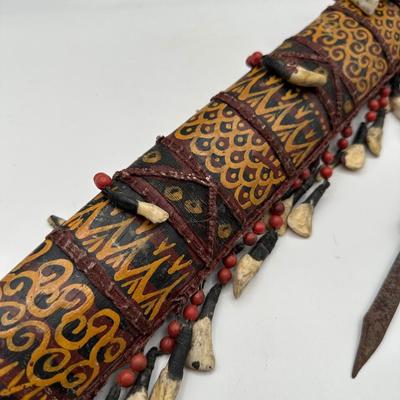
*Missing the main blade This is a striking Dayak tribal knife with its original scabbard, originating from Borneo (Kalimantan, Indonesia). Richly decorated and deeply symbolic, this ceremonial piece reflects the craftsmanship and cultural traditions of the indigenous Dayak peoples. The wooden scabbard is beautifully hand-painted in traditional motifs and adorned with animal teeth, red beads, natural fibers, and tufts of animal hair, likely boar. The decorations are consistent with items used for ritual or ceremonial purposes, not modern replicas. These intricate adornments were often indicators of social status, tribal affiliation, or rites of passage. -
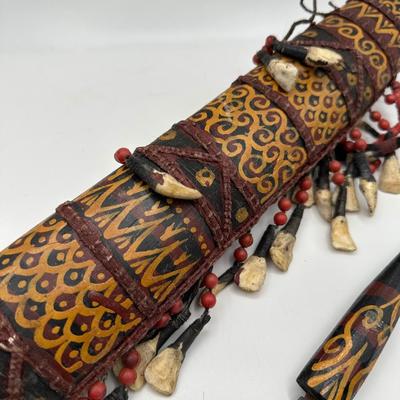
*Missing the main blade This is a striking Dayak tribal knife with its original scabbard, originating from Borneo (Kalimantan, Indonesia). Richly decorated and deeply symbolic, this ceremonial piece reflects the craftsmanship and cultural traditions of the indigenous Dayak peoples. The wooden scabbard is beautifully hand-painted in traditional motifs and adorned with animal teeth, red beads, natural fibers, and tufts of animal hair, likely boar. The decorations are consistent with items used for ritual or ceremonial purposes, not modern replicas. These intricate adornments were often indicators of social status, tribal affiliation, or rites of passage. -
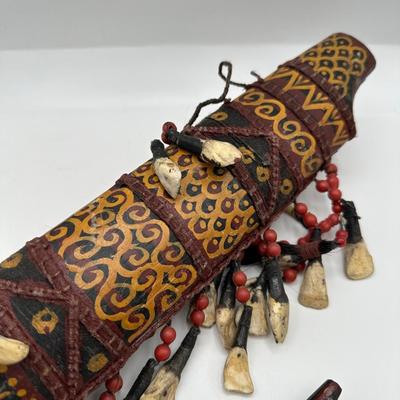
*Missing the main blade This is a striking Dayak tribal knife with its original scabbard, originating from Borneo (Kalimantan, Indonesia). Richly decorated and deeply symbolic, this ceremonial piece reflects the craftsmanship and cultural traditions of the indigenous Dayak peoples. The wooden scabbard is beautifully hand-painted in traditional motifs and adorned with animal teeth, red beads, natural fibers, and tufts of animal hair, likely boar. The decorations are consistent with items used for ritual or ceremonial purposes, not modern replicas. These intricate adornments were often indicators of social status, tribal affiliation, or rites of passage. -
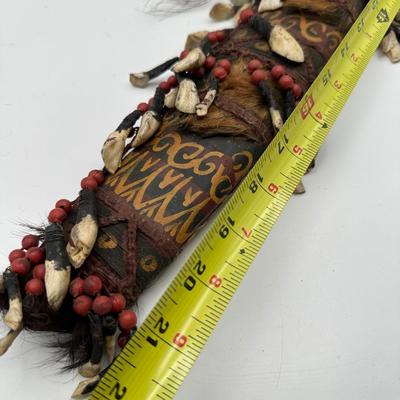
*Missing the main blade This is a striking Dayak tribal knife with its original scabbard, originating from Borneo (Kalimantan, Indonesia). Richly decorated and deeply symbolic, this ceremonial piece reflects the craftsmanship and cultural traditions of the indigenous Dayak peoples. The wooden scabbard is beautifully hand-painted in traditional motifs and adorned with animal teeth, red beads, natural fibers, and tufts of animal hair, likely boar. The decorations are consistent with items used for ritual or ceremonial purposes, not modern replicas. These intricate adornments were often indicators of social status, tribal affiliation, or rites of passage. -
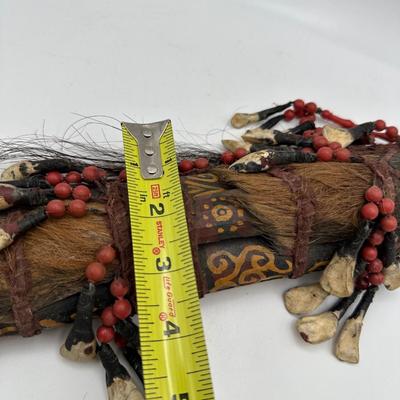
*Missing the main blade This is a striking Dayak tribal knife with its original scabbard, originating from Borneo (Kalimantan, Indonesia). Richly decorated and deeply symbolic, this ceremonial piece reflects the craftsmanship and cultural traditions of the indigenous Dayak peoples. The wooden scabbard is beautifully hand-painted in traditional motifs and adorned with animal teeth, red beads, natural fibers, and tufts of animal hair, likely boar. The decorations are consistent with items used for ritual or ceremonial purposes, not modern replicas. These intricate adornments were often indicators of social status, tribal affiliation, or rites of passage. -

*Missing the main blade This is a striking Dayak tribal knife with its original scabbard, originating from Borneo (Kalimantan, Indonesia). Richly decorated and deeply symbolic, this ceremonial piece reflects the craftsmanship and cultural traditions of the indigenous Dayak peoples. The wooden scabbard is beautifully hand-painted in traditional motifs and adorned with animal teeth, red beads, natural fibers, and tufts of animal hair, likely boar. The decorations are consistent with items used for ritual or ceremonial purposes, not modern replicas. These intricate adornments were often indicators of social status, tribal affiliation, or rites of passage.
Advertisement

